Sylvia Plath: reflections on her legacy
The Bell Jar was published less than a month before Sylvia Plath killed herself on 11 February 1963. To mark the 50th anniversary of her death, writers and poets reflect on what her work means to them
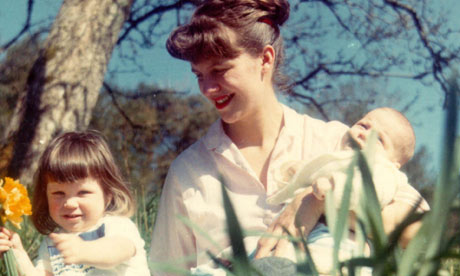
Sylvia Plath with her two children, Nicolas and Frieda, in 1963. Photograph: Writer Pictures
Lena Dunham
 Photograph: Getty
Photograph: Getty
My focus through most of college was "confessional female poets" with an emphasis on those who had committed suicide. Although I firmly catalogued myself as "anxious but not depressed", I was inexorably drawn to the work of women who existed on the lip of a complete and utter nervous breakdown. I could only begin to imagine the pressures that weighed on Sylvia Plath (child rearing, marital distress, bitter London cold) but her work had a normalising effect on my emotional life and her use of language in her poetry and prose, rhythmic, angry, injecting volatile emotion into a myriad of SAT words, rang in my head as I walked to class or drifted off at 4am.
For a "free form" class project in senior year I did a quiz show-style performance piece based on her life ("Ted Hughes cheated on Sylvia Plath: True or False?") and my final paper in my 20th-century Poetics class compared her work to that of Alanis Morissette ("Angry Girls: Alanis and Sylvia face off"). I had a recording of Sylvia reading her poem "The Thin People" that occasionally came on when I put my iPod on shuffle, abruptly bringing any party atmosphere to a halt.
I wonder if Plath would have been saved had she been born in a different time: in a time when psycho-pharmacologists are no more shameful to visit than hairdressers and women write celebrated personal essays about being bad mothers and cutters and are reclaiming the word slut. Would she have been a riot grrrl, embracing an angry feminist aesthetic? Addicted to Xanax? A blogger for Slate? Would she, like me, have found a cosy coffeehouse environment on the internet, a way to connect with people who understood her aesthetic and validated her experience? Would she have been less dependent on the approval of viewers and critics and more aware of the positive effect her book was having on splintered psyches and girls with short bangs everywhere? Or would that kind of connectedness and access to unmitigated and misspelled negativity have driven her even madder?
I asked my Twitter followers, many of them women with histories of angst and an ability to speak eloquently and even comically about it, to spare 140 characters on the topic of The Bell Jar and what it meant to them.
"All the pages fell out of my copy, the book literally lost hope & gave up on itself," said one. "This irony is not wasted on me."
"I read it right before senior year & loved it so much I thought I was going crazy too. Laid in bed for three days just to be sure."
My favorite response was a simple "it made me feel less alone." Because that's how it made me feel, too. And that's what I think art is for. Sylvia was just like us. Only she didn't have The Bell Jar.
Sharon Olds
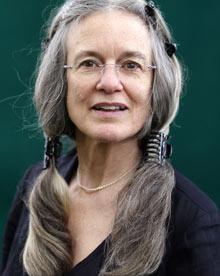 Photograph: Rex Features
Photograph: Rex Features
When I think of The Bell Jar, I see the basement of the house I grew up in – the furnace, the area behind the furnace (dust, grit, and a wall of dirt – the earth, right there in the basement). The despair in the book was not like anything I remembered having felt, but while I was reading The Bell Jar my mind's eye set that part of the novel right there at home.
When I think of Sylvia Plath, I am in awe of her intelligence, her language, her wit, her consonantal music – her sheer gift, and what must have been her drive, as its guardian, possessor, possessee, to realise it.
The suffering of those who take their own lives seems to me to be unimaginable to some of us – a terrifying and heartbreaking thought, how much worse their psychic pain must have been than anything one has oneself experienced. I remember my next-door-apartment neighbor knocking on my door, when I was about 31 – my kids were maybe five and two. She said something like, "Anne Sexton is dead – she's done it too," and some floor of some world seemed to fall away from under us, and keep falling and falling. We stood there for a while, looking at each other.
At that time I was reading Muriel Rukeyser, Gwendolyn Brooks, Ruth Stone. I was a bit afraid of Plath – her genius, and her suffering. I was beginning to write a lot – my first book would come out when I was 37. And even though I had stayed away from her poems, out of a sort of dread of her fate and many women's fate, my debt to Plath is incalculable: her fierceness and originality and embodiment of family passions had been long and powerfully present when I began to write the poems of my adult life.
My students at New York University love her work. I look at them and remember she was only 30 when she died. I tell them to talk back to any inner voices they may hear saying mean things about them. I tell them their lives are a treasure to us all. I tell them to take their vitamins.
Jennifer Egan
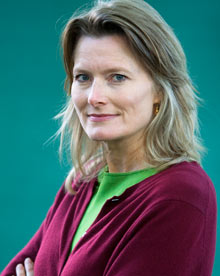 Photograph: Murdo Macleod
Photograph: Murdo Macleod
I read The Bell Jar as a teenager and was enthralled by it. I had never encountered a narrative voice so much like the one inside my head: fluttery, self-conscious, goofy, melodramatic. Plath and I were alike, I was sure, yet what I retained from The Bell Jar was mostly a sense of the narrator's irrepressible effervescence. Her suffering, and the foreshadowing of tragedy, made less impact. I felt the same kinship with Plath reading her diaries from her early years at Cambridge, when she met Ted Hughes, which I encountered a few years later. By then I was mature enough to muse over how Plath's self-dramatising highs and lows could have devolved into pure horror, but I never found the clear link between her exuberance and what followed. It occurs to me only now that my confusion about Plath's fate may have partly inspired my first novel,The Invisible Circus, in which a teenage girl tries to solve the mystery of her older sister's suicide: a lively, charismatic girl who threw herself from a cliff. Phoebe, my protagonist, runs away from home in search of the link between the exuberant sister she remembers, and her inexplicable end.
Jeanette Winterson
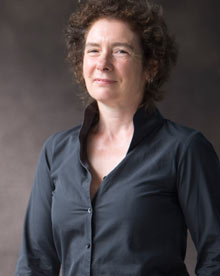 Photograph: Murdo Macleod
Photograph: Murdo Macleod
The early 60s was a terrible time for women. Worse for clever ambitious women. Valium had been on the market for two years in 1963 and by this time was being advertised aggressively at healthy women who felt trapped and desperate and whose distress had to be medicated away. This is the world of The Bell Jar.
The Bell Jar was published at the same time as Henry Miller's Tropic of Cancer was reissued after its long ban in the USA. The misogynist masterpiss billets half the population to the whorehouse. All women are for sex. Rich women are for cash. Poor women are for housework. Why wouldn't a woman go mad in a world like this? Why wouldn't a woman as gifted as Plath become terminally depressed and end in suicide? Pills don't change the world. Feminism did.
The Bell Jar was a call to action because it is a diary of despair.
Plath was gifted. She could have been great. Wrong generation. Wrong medication.
Jacqueline Rose
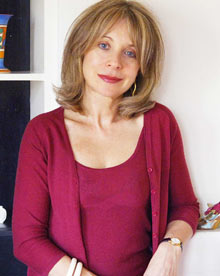 Photograph: Sarah Lee
Photograph: Sarah Lee
In recent discussions of The Bell Jar a number of things seem to me to go missing.
First, this was Plath's foray into popular fiction. Writing for the popular press was as much her ambition as "high" art. "Either Kafka lit-mag serious or SATEVPOST," she wrote in her journal in 1957, when she was already writing the poems to appear in her first published collection: "Try both styles: do it to your heart's content." At moments, she sounds like an advertising copyist for Mills & Boon. "I shall write a complete fantasy life of tearful-joyful stories for women," again in her journal in 1959, "tremulous with all variety of emotion." It is therefore my hunch that she would have loved the most recent cover of the book that has provoked such indignation.
Secondly, if the book is important, it is because it weaves its brilliant depiction of the tortuous professional and personal life of a young would-be female writer into the landmark events of 1950s America – the novel opens with the execution of the Rosenbergs. The personal diagnosis is therefore part of a much wider political malaise. For that reason alone, the tendency to read The Bell Jar as if it were the unmediated biography of Plath's personal life seems to me to diminish its significance. Why do readers of her work always reduce it to her biography, thereby cheating her as a writer, cheating any writer, of the power to transform their lives in their art?
On this too, The Bell Jar has a story to tell. In 1987, Jane Anderson brought a legal suit against the 1976 film of the book for its portrayal of her as a character, Joan Gilling, a friend of the narrator who makes a lesbian pass at her and commits suicide near the end of the book. Although she was finally given a financial award, her case was remarkably weakened by the fact that, as the defence argued, her objections to the representation as untrue simply confirmed that the book was fiction not fact (clearly she had not committed suicide). It is of course a tragedy that it would seem libellous to an American woman in the 1980s to be portrayed as a lesbian. But it should also help us to be cautious, to remember that Plath was above all a writer, who plucked the best and worst of her own inner and outer landscape and transformed them through her art to create what remain some of the most important poems, and one of the most important pieces of fiction, by any woman writer of the last century.
Lionel Shriver
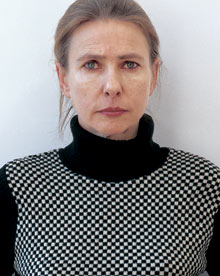 Photograph: Rolph Gobits
Photograph: Rolph Gobits
I read The Bell Jar as an adolescent, and like most teenagers had no problem identifying with a young woman who had everything going for her – looks, talent, opportunity, with her "whole life ahead of her," yadda, yadda, yadda – yet was spiralling into misery. These days depression is the stuff of postprandial dinner-party prattle, but Plath explored the condition with no sense of its being a "condition" that others shared, no established therapeutic vocabulary, and no Prozac. It was really only when William Styron publishedDarkness Visible in 1990 that depression entered mainstream social discourse and began to lose its stigma (even growing into a badge of honour for a while). Ironically, now that we regard it as a standard, hardly shameful diagnosis, routinely treatable with drugs, we may have lost a raw sense of how awful, terrifying, and bleak is the real thing. The Bell Jarrestores the horror.
Margaret Drabble
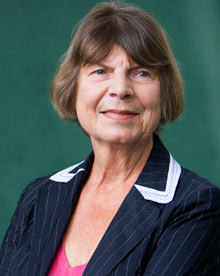 Photograph: Murdo Macleod
Photograph: Murdo Macleod
The Bell Jar is a novel of reckless vitality, and although it's about death, trauma, suicide and madness, it's as exhilarating as its narrator's first mad dash down the ski slope when she manages triumphantly to break her leg in two places. High-flying Esther Greenwood is in no way a victim, she is as greedy for experience as she is for caviar and cocktails, and she is the one who takes the initiative in her own headlong career. She is the seducer, not the seduced, a role which few women claimed in the 60s: she engineers her own loss of virginity, and coolly plants the $20 hospital bill for the "one in a million" haemorrhage that ensues upon the poor young professor whom she entraps. This is a novel about ambition and desire, about a woman's refusal even to contemplate life as a doormat. Esther wants everything. She's funny, vivid, extreme. There had been few heroines like her in fiction, but many more were to follow in her wake.
Sarah Churchwell
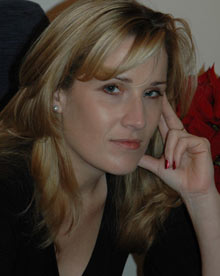 Photograph: PR
Photograph: PR
In 1957, six years before The Bell Jar would be published under the pseudonym Victoria Lucas, Sylvia Plath mused in her journals: "I could write a terrific novel. The tone is the problem. I'd like it to be serious, tragic, yet gay & rich & creative." Knowing that she shared "that fresh, brazen, colloquial voice," she thought she might model herself on JD Salinger, but worried that his first-person perspective could prove "limiting". The voice that Plath eventually created is indeed fresh, brazen and colloquial, but also sardonic and bitter, the story of a young woman's psychological disintegration and eventual – provisional – recovery. The tone of The Bell Jar is not its problem, but its triumph.
An acidic satire on the madness of 1950s America and the impossibility of living up to its contradictory ideals of womanhood, The Bell Jar is a much funnier book than its reputation as the favourite novel of morbidly self-obsessed adolescent girls suggests. Among the many ironies surrounding the novel's undeserved reputation for taking itself seriously, one of the sharpest is perhaps the way that it has tended to be dismissed along gender lines, as a book "merely" for women. Perhaps this has something to do with the fact that the men it depicts are either toxic or hopeless? When Esther Greenwood first sees a naked man, she recalls: "The only thing I could think of was a turkey neck and turkey gizzards and I felt very depressed." But Plath excoriates the women who conformed to the era's rules, as well; "girls like that make me sick," Esther repeats in a refrain that becomes increasingly pointed: her society is indeed making Esther sick. Having been hospitalised after a suicide attempt, Esther has an epiphany about the way that conventional femininity was trapping all the women like her: "What was there about us, in Belsize [Hospital], so different from the girls playing bridge and gossiping and studying in the college to which I would return? Those girls, too, sat under bell jars of a sort."
Esther has been straitjacketed by her era's rigid ideas about women and its double standards: when she is told, "what a man is is an arrow into the future and what a woman is is the place the arrow shoots off from," Esther responds that she "wanted change and excitement and to shoot off in all directions myself, like the colored arrows from a 4th of July rocket". That is Esther's declaration of independence, and she will spend the rest of the novel fighting the kinds of battles that would eventually be called the sexual revolution. Appearing in the same year as Betty Friedan's The Feminine Mystique and a year after Doris Lessing's The Golden Notebook, The Bell Jar was part of that revolution – but also a book of biting wit, mordant social observation, and a moving exploration of how a search for integrity can lead to disintegration.
Sarah Churchwell is the author of The Many Lives of Marilyn Monroe (Granta)
Lavinia Greenlaw
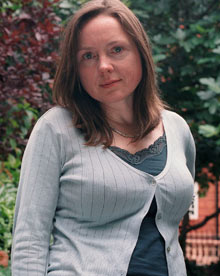 Photograph: Karen robinson
Photograph: Karen robinson
If I opened a novel now and it began with the line: "It was a queer, sultry summer, the summer they electrocuted the Rosenbergs …" I'd close it again fast. Not only does it sound strenuously staged but we've seen an awful lot of this kind of thing since 1963. Plath can be a terrible influence. We imitate her without having a clue about the technical genius that makes her work such a force.
The Bell Jar has stayed with me from first reading as a world both terrible and formal, crazy and clear. I go back to it as a model of how to write from deep within the self while being properly and ruthlessly artful. On that first page we meet Esther Greenwood, whose thoughts start in an ordinary place – the weather, the news, jobs, clothes, boys – and then heighten and fix in images as brilliant and exact as any in Plath's poems. Yet Esther still sounds like any young woman bumping from work to parties to home "like a numb trolley-bus" while "all the little successes I'd totted up so happily at college fizzled to nothing …" We're watching someone start to tip, a moment Plath explored again and again. It forms in her poems like ice. The Bell Jar has just the same crystalline inevitability.
Ruth Fainlight
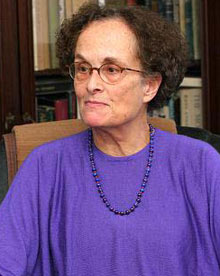 Photograph: PR
Photograph: PR
Sylvia and I met at the presentation of the 1961 Hawthornden Prize by its then holder, Alan Sillitoe, to the new recipient, Ted Hughes, each man accompanied by his wife. We were two young Americans, barely acknowledged poets (although she had already published a first collection, while I had to wait a few more years for mine), and married to charismatic and successful English writers.
My first impression was of a burningly ambitious and intelligent young woman trying to look like a conventional, devoted wife. She wore a small hat and a tight-bodiced, full-skirted shiny dark green dress – like one of my New York aunts dressed for a cocktail party. There was something almost excessive about that disguise. But afterwards, when someone suggested we stay together a bit longer and go for a drink, she and I exchanged a glance of acknowledgement as "spirit-sisters". Sadly, circumstances gave only few occasions to confirm this; they were about to move to Devon. In the weeks before they left, we met a few times and the friendship between the four of us deepened. We promised to visit them as soon as possible.
In fact, it was not until the next spring, when both of our sons had been born, that we drove there for a weekend visit. My most vivid memory of those few days is of the afternoon spent picking daffodils with Sylvia. To one side of the house a large grassy bank, covered with daffodils at this time of year, sloped down to the lane. Energetic and practical – they were not earning much money then – she had arranged with a local florist to supply as many as she could. Several long brown cardboard boxes and a pile of tissue paper lay on the grass nearby, and Sylvia explained how to cut the stem at a certain point, lay the required number in the box, then cover the flowers with paper. She worked much faster than me. I tried to keep up, but after a time could not bear to look into another one of those yellow trumpets crammed with sexual organs: Nature was giving me the horrors. She laughed and told me to stop.
It was another afternoon when we sat in her study, each holding a baby on our laps, and talked about what we were writing. She showed me her latest poem and said that she wanted to dedicate it to me. The poem was "Elm"; perhaps the most thrilling dedication of my life.
Lisa Appignanesi
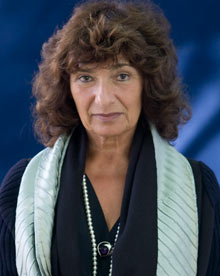 Photograph: Colin McPherson/Corbis
Photograph: Colin McPherson/Corbis
I think I first read a poem by Sylvia Plath at the same time as I learned of her death. The latter seemed to me unremarkable, perhaps because I had never heard of her or because death was more common than poetry. The poem, however, was something else. I can still see its layout on the magazine page - Time or Newsweek. "Daddy," it blared, "I have had to kill you."
The poem's rhythms, that potent blend of nursery rhyme and ragtime, still thrum through me: "You do not do, you do not do/Any more, black shoe" rhyming daringly at the stanza's end with "Achoo".
Shakespeare aside, the only poetry I knew back then was all about trees, daffodils, clouds, bean-rows, or statues in desert places. Few of these seemed particularly resonant in my urban life. But here on the page by this woman called Plath, was a powerful drama whose matter and language I recognised: the German tongue, the Polish town, the Jew, the boot in the face, "the brute heart of a brute like you"… Later, as I grew up, I realised that I had been dimly aware of more, too: the generational tugs, the hauntings, the fact that women inflect experience differently from men, not to mention that whole area of what Al Alvarez has called "big, dark feeling".
Two slim volumes of Plath sat on my shelf when I first came to Britain. They spoke far more than their size and ever more loudly. They grew to three with The Bell Jar, the first novel I had ever read which ventured into a psychiatric institution. By some accident of time and place, I met people who had known Plath and who told stories of her vivid presence as well as of the tragedy of her suicide, in part occasioned by a toxic cocktail of anti-depressants she was allergic to. When I came to write my history of women and the mind doctors Mad, Bad and Sad, Plath's story played its part: her journals are a resonant source.
Haphazardly this morning, I thought I'd type her name into YouTube. After all these years, for the first time I heard Sylvia's voice. It's a beautiful voice with its educated, New England lilt of a kind that barely exists anymore. It's also lucid, articulate, strong, and witty as she talks of how prose allows you to include more of the detailed experience of life, those "toothbrushes" you can't put into poety. And there she is reading "Daddy"– Kapow!
Mad, Bad and Sad: A History of Women and the Mind Doctors from 1800 to the Present is published by Virago
Kate Moses
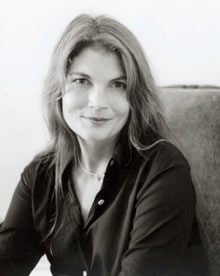 Photograph: PR
Photograph: PR
When I think of The Bell Jar, I do not think first of the story of Esther Greenwood's harrowing entrapment in the suffocating air of her own madness. I do not think of the echo chamber of disillusionment and despair behind Sylvia Plath's first suicide attempt at 20 and the tragic finality of her successful attempt at 30. What I think of is the one moment in Plath's novel when she casts her fictional counterpart beyond the trajectory of the story's events. Recalling the "piles and piles" of swag heaped upon herself and the other college girls who'd won summer jobs at a New York fashion magazine, Esther describes the gilt make-up kit and bedazzled sunglasses case she still keeps. "I use the lipsticks now and then," she says, and here is Esther's singular moment out of time: "… and last week I cut the plastic starfish off the sunglasses case for the baby to play with."
It is this hopeful leap into the future that pierces me: the older Esther, a mother now, practical and resourceful – just as Plath was during the creation of The Bell Jar. Pregnant with her second child, awaiting the imminent publication of her first poetry collection, Plath wrote her novel in a matter of months, the grant she'd received to fund its completion strategically repurposed so she could get started on yet another book – the poems we now know as the Ariel poems. Plath's Ariel was no less a story of redemption than The Bell Jar: the story of a woman, a mother, a daughter, a wife, an artist who still believed not just in the possibility of happiness, but in herself. However brief and fragile her moment of hope, however anguished those last months of her life, Plath recognised the timeless incandescence of her achievement. It was, she wrote: "A gift, a love gift/Utterly unasked for …"
It was, it is, a star passing from her hand into ours.
Wintering, inspired by Plath's Ariel poems, by Kate Moses is published by Sceptre
No comments:
Post a Comment